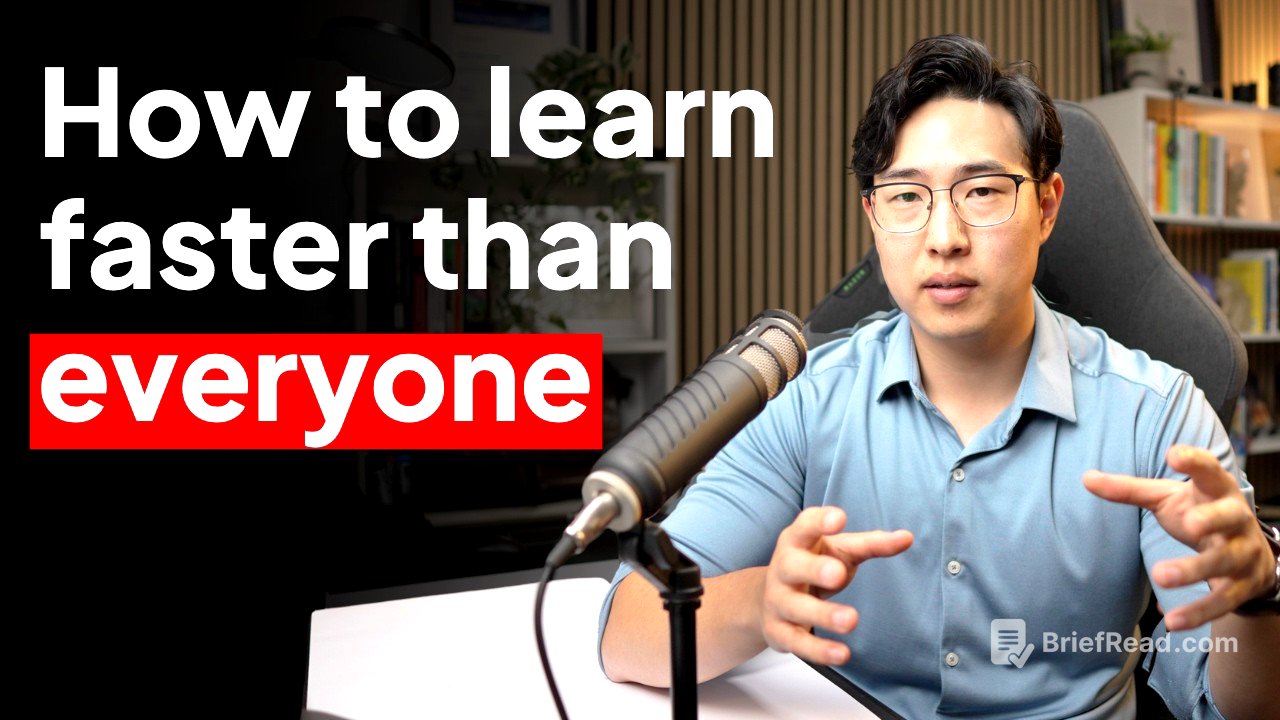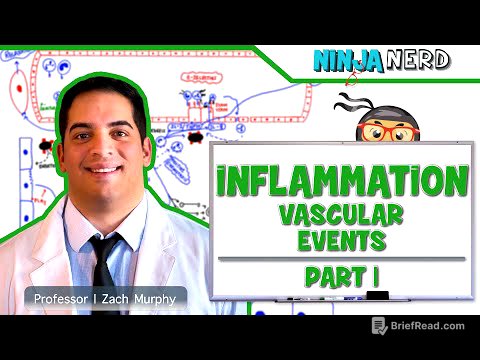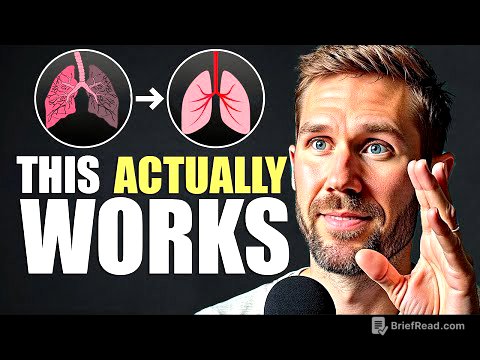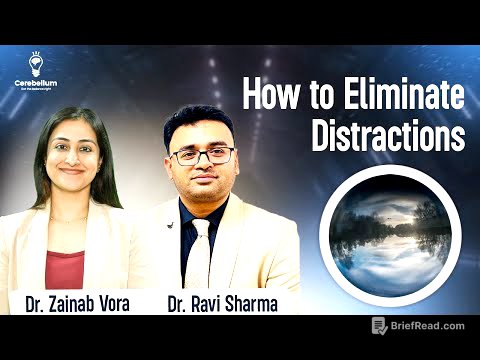TLDR;
This video explains the concept of learning how to learn, breaking it down into five key dimensions: deep processing, self-regulation, mindset, retrieval, and self-management. It emphasizes that effective learning goes beyond just studying techniques and involves understanding and improving these underlying dimensions. The video offers practical advice on how to identify your biggest learning bottlenecks and start improving them.
- Learning how to learn involves understanding the underlying processes in the brain rather than just focusing on study techniques.
- The five dimensions of learning are deep processing, self-regulation, mindset, retrieval, and self-management.
- Identifying and addressing your biggest learning bottleneck is crucial for improving your overall learning ability.
Introduction: The Importance of Learning How to Learn [0:00]
The video introduces the critical yet complex skill of learning how to learn. It highlights that many individuals navigate life without mastering effective learning techniques. The speaker shares his 13-year dedication to understanding learning research and guiding individuals across various professions to learn efficiently. The video aims to equip viewers with the ability to diagnose their learning difficulties and implement targeted improvements.
Anatomy of Learning: Understanding the Learning Process [1:31]
The speaker explains that learning can be divided into phases: information intake, processing, and application. Studying is the process where we take notes or read in a certain way, using different types of applications. The goal is to study in a way that allows us to have a better memory and apply information effectively. The speaker emphasizes that the most critical aspect of learning occurs in the brain, where information is processed and leads to outcomes like retention and application of knowledge. The difference in learning outcomes between individuals often lies in how they think about the information, not just the techniques they use.
Deep Processing: Building a Network of Knowledge [5:58]
Deep processing involves thinking about new information in a way that forms a robust knowledge schema, essentially building a network of interconnected information in the brain. Unlike superficial processing, which leaves information isolated and easily forgotten, deep processing integrates new knowledge into a larger, denser network, making it more memorable and accessible. The speaker highlights neuroplasticity, the brain's ability to form new connections, making it possible to train deep processing skills.
Identifying and Improving Deep Processing [10:25]
To determine if deep processing is a limiting factor, consider whether you spend a significant amount of time understanding new and complex concepts. Symptoms of poor deep processing include difficulty with retention and application of knowledge, as well as frequently relearning the same material. To improve deep processing, start by building awareness of when your learning is isolated versus integrated. Integrated learning involves comparing and contrasting information, actively thinking about the big picture, and prioritizing how new information fits into your existing knowledge schema.
Self-Regulation: Using Techniques to Drive Processing [14:32]
Self-regulation involves how you use different techniques to facilitate deep processing. It encompasses the methods and strategies you employ to interact with information, such as note-taking, reading, and revision. Effective self-regulation helps compensate for lower levels of deep processing by optimizing how you engage with the material. The speaker breaks down self-regulation into three components: cue, monitoring, and adjustment.
Q, Monitoring, and Adjustment: The Cycle of Self-Regulation [18:32]
The speaker explains the three parts of self-regulation: Q (cue), monitoring, and adjustment. The "Q" is what you pay attention to, such as whether your learning is isolated or integrated. Monitoring involves actively paying attention to the cue and recognizing its presence. Adjustment is where you take action and make necessary changes to your learning techniques. The speaker warns against the common pitfall of mistaking increased effort for ineffectiveness, which can lead to abandoning beneficial changes.
Identifying and Improving Self-Regulation [22:11]
To determine if self-regulation is a major limiting factor, consider whether you lack a variety of learning methods and don't actively monitor the effectiveness of your learning. If you tend to use the same methods out of habit and struggle to understand why you sometimes get poor results, your self-regulation skills may be lacking. The speaker shares his own experience of having poor self-regulation and encourages viewers to take a test to identify their most significant limiters.
Mindset: Responding to Discomfort and Errors [24:16]
Mindset refers to how you respond to discomfort, difficulty, and errors in the learning process. A fixed mindset leads to insecurity and fear when encountering challenges, causing paralysis and hindering skill development. In contrast, a growth mindset embraces errors as learning opportunities and fosters excitement for growth. The speaker emphasizes that improving mindset can significantly accelerate learning compared to other dimensions.
Cultivating a Growth Mindset [29:11]
To cultivate a growth mindset, the speaker advises being open to the idea that mindset is the first thing you need to work on. He also recommends limiting your information intake to avoid analysis paralysis. At a certain point, it's more beneficial to take action and make mistakes rather than seeking more information to avoid them. The speaker encourages viewers to reflect on their own tendencies and challenge their aversion to making errors.
Retrieval: Recalling Information from Memory [33:06]
Retrieval involves recalling information from long-term memory for various purposes, such as problem-solving or teaching. Effective retrieval is crucial for retaining knowledge and developing fluency. The speaker explains that information decays over time, but retrieval practice can recharge memory and slow down the rate of decay. He emphasizes the importance of practicing retrieval in a way that mirrors how you need to use the knowledge in real-world situations.
Optimizing Retrieval Practice [35:46]
The speaker advises practicing retrieval in a way that mirrors how you need to use the knowledge in real-world situations, moving from isolated recall to integrated application. He also introduces the concept of interleaving, which involves approaching knowledge from different angles and mixing up retrieval strategies to enhance mastery and memory.
Identifying and Improving Retrieval [38:12]
To determine if retrieval is a limiting factor, consider whether you rarely revisit or apply what you learn. If you spend a lot of time on retrieval but struggle with deep understanding and application, your retrieval methods may be of low quality. The speaker suggests that improving retrieval practices can save time and yield better results.
Self-Management: Prerequisites for Effective Learning [40:15]
Self-management involves the skills and habits that support effective learning, such as time management, prioritization, and focus. These are prerequisites for successful learning, as even the best learning techniques are ineffective if you can't manage your time, attention, and priorities. The speaker emphasizes that self-management issues can become rate limiters, regardless of your other learning abilities.
Improving Self-Management [42:24]
To improve self-management, the speaker advises isolating the specific problem and defining the chain of events or behaviors that contribute to it. Instead of using broad labels like "I procrastinate," identify the specific triggers and behaviors that lead to procrastination. He also emphasizes the importance of committing to change and being willing to adopt drastic measures to address the underlying issues.
Conclusion: Taking Action and Seeking Guidance [45:46]
The speaker summarizes the five dimensions of learning and acknowledges that it can be overwhelming. He reminds viewers about the test available to help identify their biggest limiters and offers his program as a guided approach to improving each dimension. The speaker thanks viewers for watching and encourages them to take action to improve their learning abilities.









